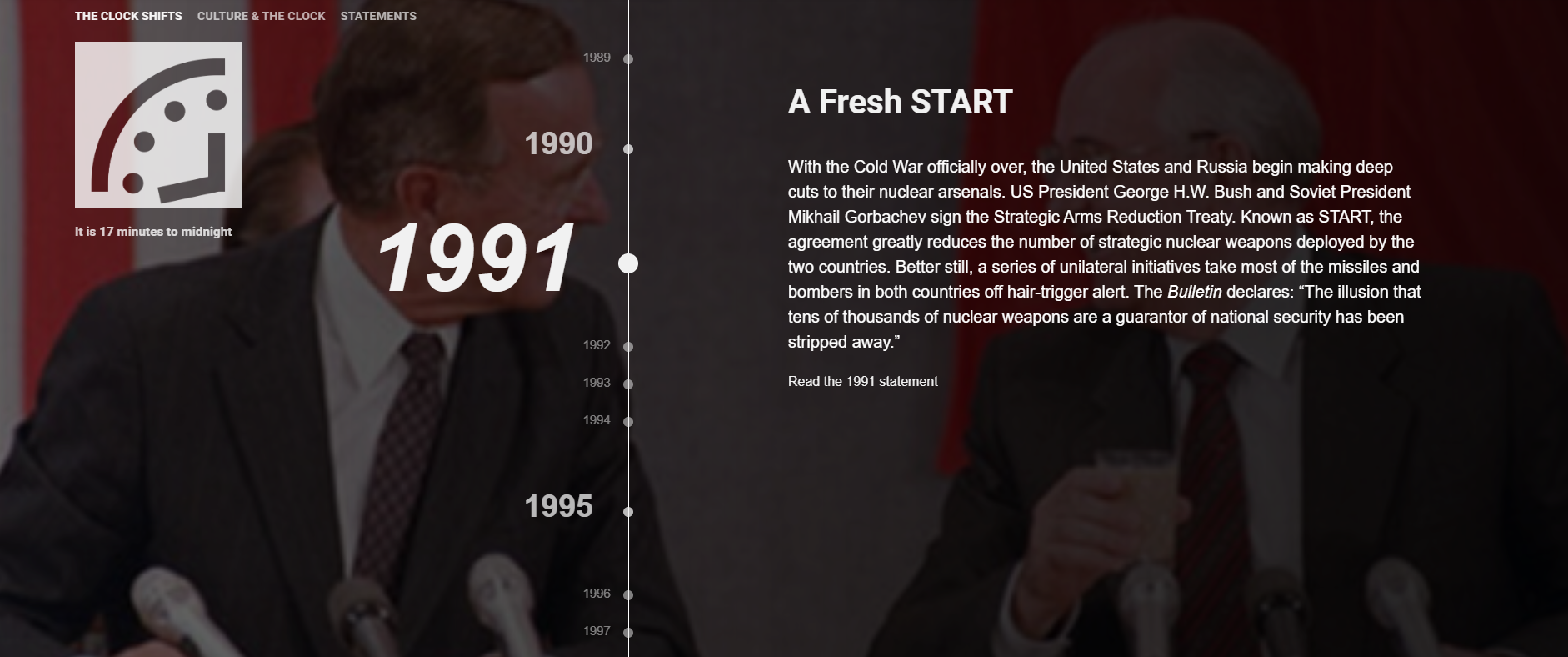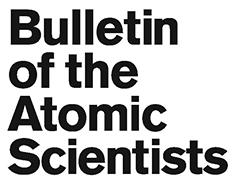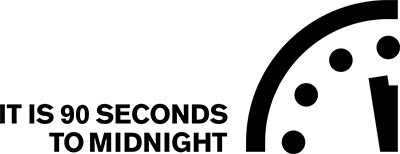
Bulletin of the Atomic Scientists, January 29, 2024
Posted: 29th January 2024

The Clock Shifts: History of the Doomsday Clock
What’s the history of the Doomsday Clock? When and why was the time changed over the years? How has it inspired pop culture? Check out the Bulletin’s new timeline. Read more.
RACHEL BRONSON, DANIEL HOLZ
Doomsday Clock says we’re the closest we’ve been to apocalypse. We need to move faster.
“We see this as a moment of acute danger. But as experts who spend our lives on these issues, we also see hope,” write Bulletin president and CEO Rachel Bronson and Science and Security Board chair Daniel Holz in this USA Todayarticle. Read more.
SCIENCE AND SECURITY BOARD
-5H-K3qPcuQ-feature-shared/5g5sr/1063207261/h/b4zF3mJ6yN1c2dNlsky34Fs0A8stv37fITYqlj9vOJM”>Watch here.

Science on Screen at the Gene Siskel Film Center
For Chicago-based Bulletin readers: join us for a series of screenings including Godzilla, Don’t Look Up, Contagion, and War Games.
Watch films with experts and discuss the end times, and how we can avoid them. Running February 9th – 12th.
MATT FIELD
Could AI help bioterrorists unleash a new pandemic? A new study suggests not yet
“Could new AI technology help unleash a devastating pandemic? That’s a concern top government officials and tech leaders have raised in recent months,” writes the Bulletin’s biosecurity editor. Read more.
QUOTE OF THE DAY
“We’re going through a period in which arms control is suffering. We’ve left treaties, the Russians have left treaties, and we’re going to be left with a wild wild west when it comes to nuclear weapons.”
—Maj. Gen. Robert Latiff (Ret.), member of the Bulletin’s Science and Security Board, Washington Journal, CSPAN
Your ongoing support ensures we stay on mission and get the job done.
Thank you!

